
Characters, locations, and worldbuilding; oh my!
I’ve been a huge fan of Dungeons and Dragons, roleplay, and all things narrative since I was a teenager. Before I knew this was a field of design, I was creating little characters and putting them into stories- sharing those worlds with people and hoping that they would enjoy it as much as I did. One thing always rang true, though: The world becomes the stage, and the true stars are the players.
The Process
1. Spinning Up
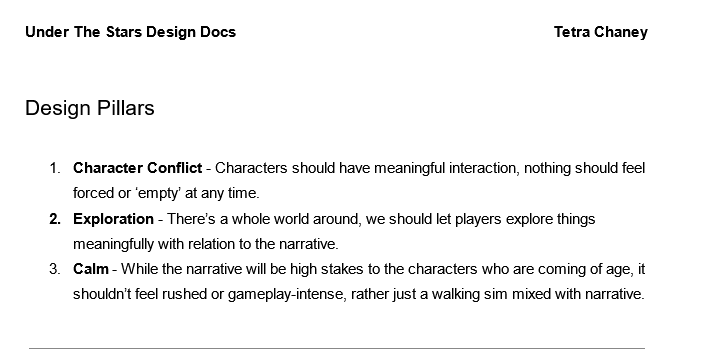
The first thing that I do, as with most of my projects, is create a set of three (sometimes more) design pillars. These will be something that I guide myself with throughout the entire project, just to make sure that everything I’m doing supports the core values of my project.
2. Roughing It Out

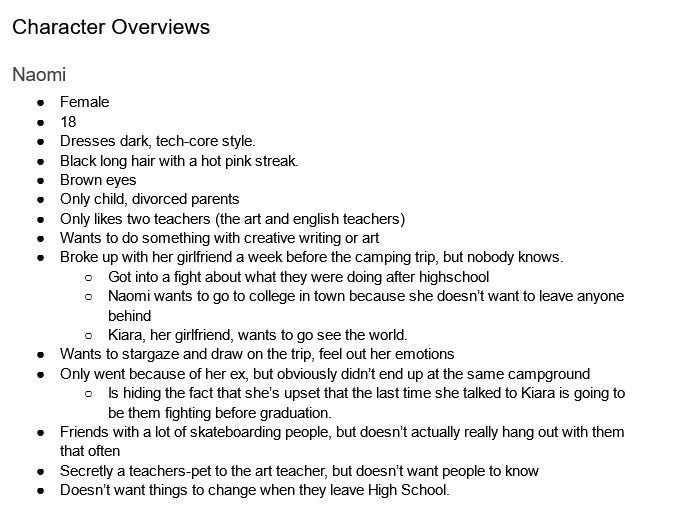
Afterwards, I’ll start focusing on overviews. What do things look like in this project? Particularly I’m focused on narrative for this project, so I focus on:
- Relevant Characters
- Small Plot Blurbs
- Settings
Basic narrative components that you can find in every game, the basics.
3. The Fine Details

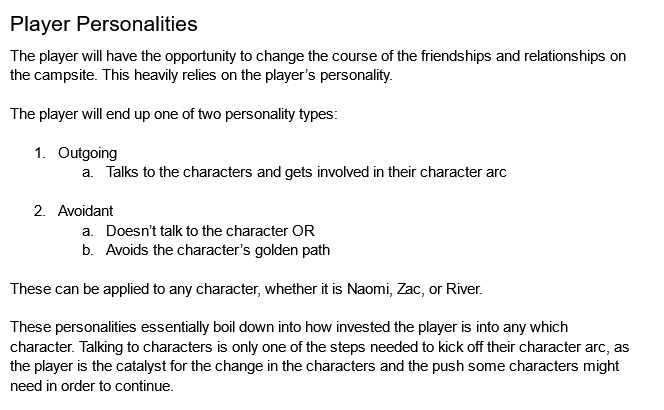
Continuing to build off of that, I start to develop what really breaths life into the game:
- How do characters interact, and why?
- What are some previously established relationships between these characters?
- How does the narrative effect the gameplay, and vice versa?
4. Getting The Meat
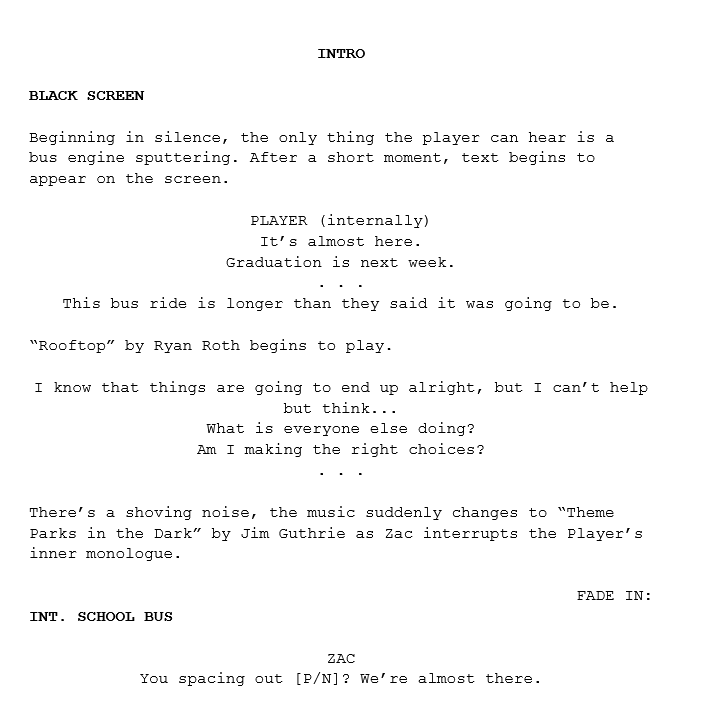
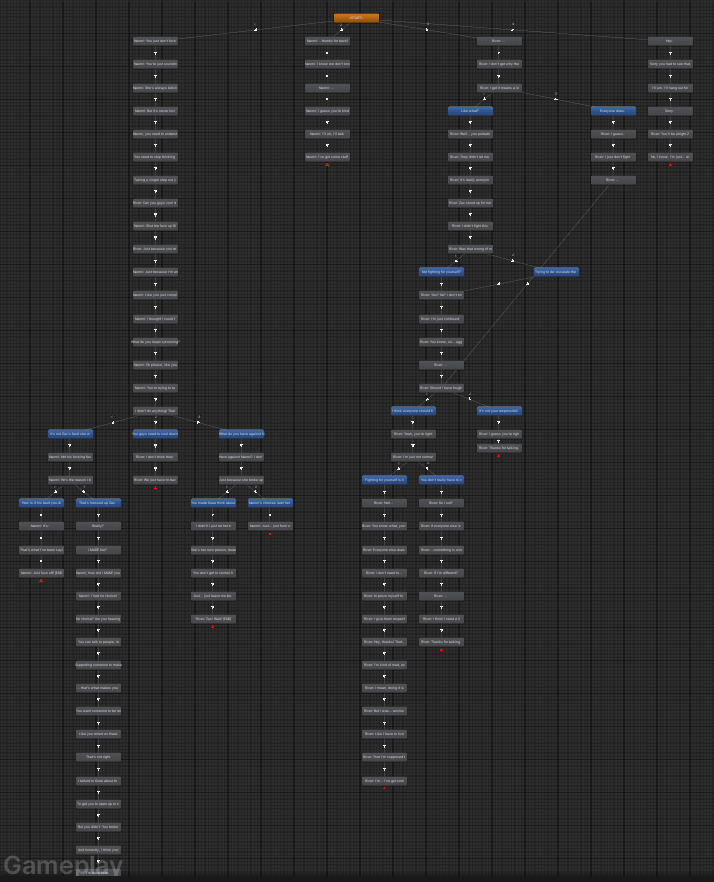
Now we get into building the thing, the content push. I’ll generate things like:
- Scripts
- Quest
- “Keystone Moments”
Keystone moments are things players should remember. Keystones mark a shift in both the plot, but often times also the characters. Things from these points should feel different, evoke a different emotion than the one before. This is where those come out to shine.
5. Polish!
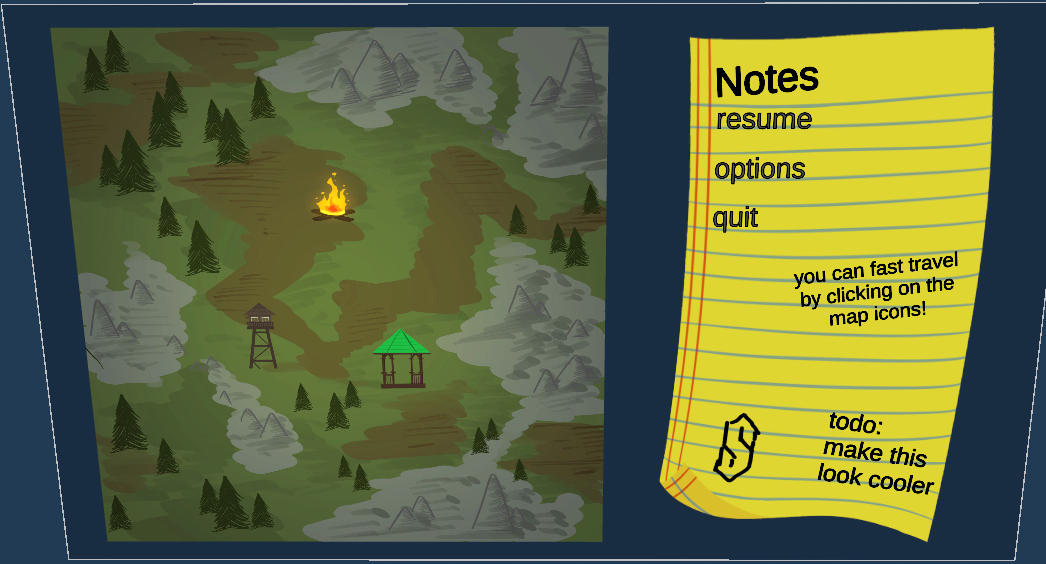
Finally, I can get around to flavoring. This is where I begin to do art passes, attempting to place whatever I have the resources or capacity to do with what time I have left.
This is often where a good chunk of the emotion and feeling come from, really refine the soul of the game.
6. Retrospective
Then, I’ll take a look at the big picture.
- What feels good and what doesn’t?
- How can I change things in this project to function better?
- How might I use what I learned here on other projects?
For this particular project, a lot of the UI could have used a huge facelift to more exemplify the narrative. I wish I could have additionally had more camera angles pan between the characters in a scene in order to more show who was talking, just so players couldn’t get lost.
And after this retrospective (or rather in some cases, a post-mortem) I’ll move forward onto my next project, restarting this cycle!